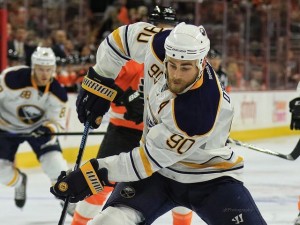The eye test. The preferred evaluation measure of former head coach Ted Nolan. While such a coaching tactic is why he’s now unemployed, it’s quite plain to see this Buffalo Sabres team is much improved over the previous two editions. However, they continue to struggle to consistently put the puck in the back of the net. So should we expect the goals to start flowing? Let’s take a look at some stats to forecast future scoring.
Where The Sabres Currently Rank

It seems like the Sabres should be scoring more, but is this really the case? The Sabres currently rank 18th in Corsi for (1126), but 25th in Corsi per 60 minutes of play (49.3) and 21st in Corsi for percentage (48.5).
Now let’s compare that against the team’s scoring numbers. The Sabres rank 23rd in goals for (39) and an abysmal 27th in goals for per 60 minutes of play (1.72).
And how does all of this compare to the Sabres ability to convert? The team’s shooting percentage is far below the League average. The Sabres rank 25th, shooting at a clip of just 6.02%. Part of the reason behind the low percentage could be that the shots are just that – low percentage shots.
This is suggested by a couple other numbers. The Sabres are taking 32.8% of their faceoffs in the defensive zone compared t0 just 30.0% in the offensive zone, which is 25th in the NHL.
When the Sabres are given quality opportunities, they’ve been more successful. This is pointed out by their success on the power play. The Sabres currently rank 2nd in the NHL in power play percentage (23.4%)!
What To Expect Moving Forward
By looking at the current numbers we should expect a slight uptick in scoring from the Sabres the rest of the way, but there are no significant outliers to suggest the Sabres have been unlucky thus far. While the Sabres are much improved from a year ago, let’s not forget just how bad they were. Even with significant improvements, the Sabres are a below average team in most cases (statistically speaking).

What will dictate the Sabres scoring probability will be faceoff start zones and power play opportunity. If they can swing their ratio of defensive-offensive zone starts just a few percent, they should see an increase in scoring. The Sabres are middle of the pack (14th) with a faceoff percentage of 50.1%, suggesting they’d generate more opportunities with more offensive zone starts.
The Sabres may have the second-best power-play unit, but they rank only 13th in power play opportunities. If they can draw a few more penalties, they will in turn score a few more power play goals, if they maintain they’re current percentage.
Another possible projection to consider is that the Sabres are a young team that is gradually trending upwards (at least presumably), therefore those improvements should come with a boost in scoring.
To conclude, it should be expected the Sabres start scoring more, but not much more.